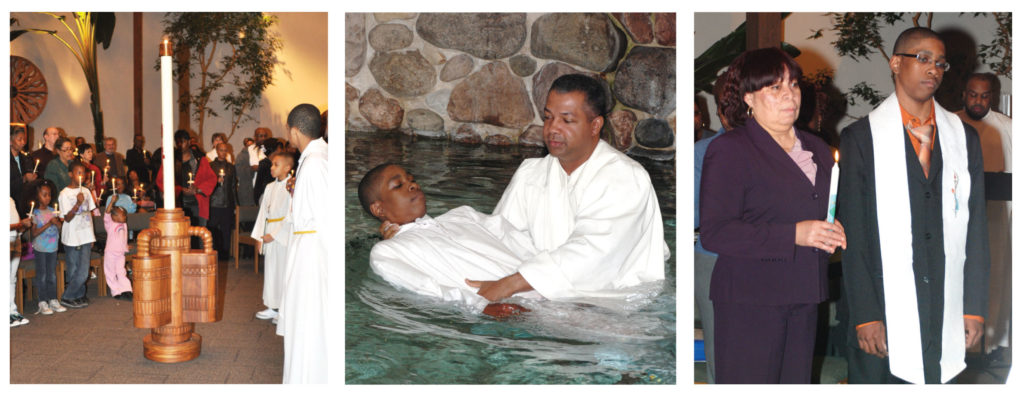On Easter Sunday we read the Easter story from John’s gospel. Mary Magdalene sets in motion the Easter gospel when she goes to the garden to visit Jesus’ tomb and finds the tomb open and empty.
The time is the dawn of a new day in creation, an eighth day. Death proves not the end for Jesus though fear, cruelty, power, and violence have had their way with him as they have had their way with many in our world. The same God who begins life and sustains life raises Jesus to new life.
Mary Magdalene runs to bring Peter and the beloved disciple to the empty tomb. Both disciples see the same evidence. Peter hesitates. The beloved disciple enters the tomb, sees it empty, and believes. This disciple makes the ideal response. Ending the Easter Sunday gospel with this disciple’s response calls us to follow his example — to come, see, and believe God’s glory revealed in Jesus’ resurrection from the dead, the vision and promise of our own life with God.
Many want to identify the beloved disciple with John, the writer of the gospel. However, the gospel deliberately describes this person with words that fit every disciple — a way to draw us into the story and invite us to see and believe.
The gospel for Easter Sunday doesn’t finish Mary Magdalene’s journey to faith. She stays at the empty tomb, grieving, crying, and meets a man whom she thinks is the gardener until he speaks her name. She hears her name, recognizes her teacher, and believes. Jesus explains that he goes “to my God and your God, to my Father and your Father” (John 20.29). We believers are brothers and sisters who share Jesus’ relationship with God, his Father.
Jesus sends Mary Magdalene to be the apostle to the other apostles. She returns to the whole company of Jesus’ disciples to announce, “I have seen the Lord.”
- What feelings do you experience at the empty tomb? Guilt? Fear? Ecstasy? Immediate faith? Hesitancy? Blinding grief?
- What grounds your faith in Jesus’ resurrection and the promise of our own?

The good news of Jesus’ resurrection has travelled through people proclaiming and living the gospel for 21 centuries. Our world is global now. The spring awakening of earth hints of the mystery of Easter in the northern half of Earth. In the southern hemisphere Christians celebrate Easter without the great budding and sprouting that goes on in the north.
Our story of creation now is much longer and more involved than Genesis describes, a process that unfurls over 13.7 billion years and continues today. Theologian John Haught suggests, “We should no longer think of God having a plan but instead a vision that aims at bringing into being a community of love.”
Thinking of our holy history as a vision rather than God’s set plan allows for our human freedom and recognizes we participate in co-creating with God. We are part of the evolving web of life and have the capacity to transcend ourselves and become more than we are. We recognize the Spirit endows the whole cosmos with the capacity to transcend itself toward ever new forms.
- What vision for the cosmos do you experience in celebrating Easter?
- What is your understanding of redemption?
Mary Magdalene brings the whole community of Jesus’ followers the good news, “I have seen the Lord.” Easter testifies to the power of God’s love. Jesus’ resurrection testifies to the impossible coming to be. Every dawn testifies to the giver of our lives, the Holy Spirit, calling us into song like the birds, calling us into deeper roots like the bulbs, calling us with poet Gerard Manley Hopkins to recognize Easter is a verb.
We Christians welcome Jesus to easter in us. What Jesus has done for us in giving himself wholeheartedly we must do for one another. We weave with our love each day a community of love in our world.
- How are Jesus and his Spirit eastering in you?
- When and to whom do you proclaim Jesus’ resurrection and promise of new life?
- What new life will you keep on cultivating in the Easter season?
